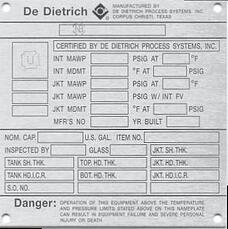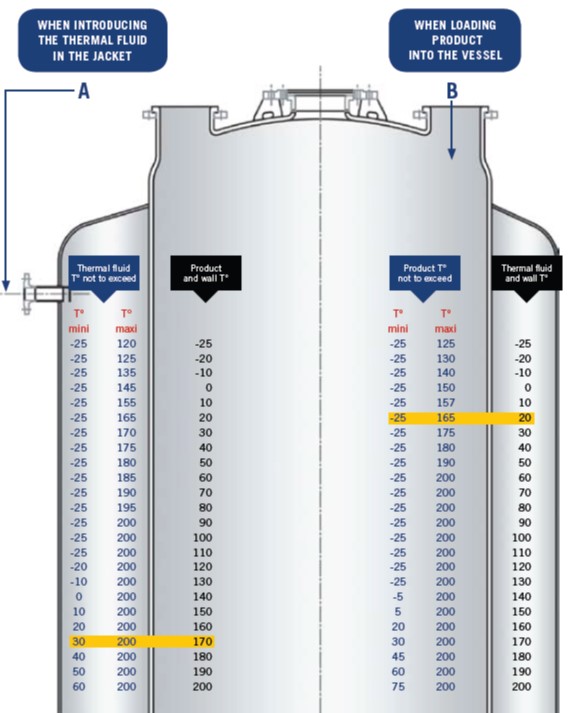How to Keep your Glass-Lined Equipment Safe from Thermal Shock
Jennifer Mayo
|
July 9, 2015
|
2 minute read
 Glass-lined steel equipment has operating limits that are based on mechanical, thermal, and electrical criteria. Additional limitations may be present based on the characteristics of your product. Knowing these limitations is crucial to safely and efficiently using your equipment. The design limits are clearly stamped on the nameplate of each vessel and should never be operated to exceed those limits. It is important to also keep in mind that various accessories installed, such as mechanical seals, valves, sight glasses, etc. must be considered when determining the maximum pressure and temperature operation parameters. If their limits are less than that of the vessel then it will restrict the vessel operation ranges.
Glass-lined steel equipment has operating limits that are based on mechanical, thermal, and electrical criteria. Additional limitations may be present based on the characteristics of your product. Knowing these limitations is crucial to safely and efficiently using your equipment. The design limits are clearly stamped on the nameplate of each vessel and should never be operated to exceed those limits. It is important to also keep in mind that various accessories installed, such as mechanical seals, valves, sight glasses, etc. must be considered when determining the maximum pressure and temperature operation parameters. If their limits are less than that of the vessel then it will restrict the vessel operation ranges. One thing to watch out for when operating your vessel is thermal shock, as this can cause an immediate loss of the integrity of the internal glass lining. Thermal shock to the glass lining can occur when the recommended safe temperature differential is exceeded. This phenomenon is not limited to industrial equipment. I’m sure all of you have caused or been the victim of thermal shock at some point. Have you ever poured boiling water into a cold glass and have it crack? I actually encountered a similar problem at a restaurant. I innocently ordered a soda, not knowing they had poured the ice cold beverage into a piping hot glass that was fresh out of the dishwasher. The drink miraculously got delivered to my table but proceeded to crack and spill all over me when I tried to pick it up to take a sip. A bit of a mess at the table and an uncomfortable meal with a wet lap was a minor inconvenience, but damage to your process equipment can be a costly mistake!
There is a simple solution to this though – just reference our handy “Maximum Allowable Thermal Shock – 3009 Glass” chart and you can easily determine the safe temperature differentials for 3009 glass lining. The chart is easy to read:
- The left side of the figure shows the acceptable temperature range of the jacket fluid based on the temperature of the product in the vessel. This data is needed when you are introducing a heating or cooling fluid into the jacket.
Example 1: If the glass-lined wall (and the batch) is at 356°F, the fluid introduction should be between 86° F and 518°F.
- The right side of the figure indicates the suitable temperature range of the product based on the current temperature of the jacket fluid. This data is needed when you are introducing product into the vessel.
Example 2: The reactor is to be charged when the glass-lined wall or fluid in the jacket is 302°F; therefore materials between 32°F and 482°F may be safely charged into the vessel.
Maximum Allowable Thermal Shock – 3009 Glass
 In general, the higher the operation temperature, the lower the safe temperature differential. If you are ever unsure it is always best to consult with a professional at De Dietrich who can give you the right guidelines.
In general, the higher the operation temperature, the lower the safe temperature differential. If you are ever unsure it is always best to consult with a professional at De Dietrich who can give you the right guidelines.
We recommend consulting our free eBulletin “Installation and Maintenance Manual for De Dietrich Glass-Lined Steel Equipment” that contains a copy of this chart plus more useful information on the proper operation of glass-lined steel equipment.
